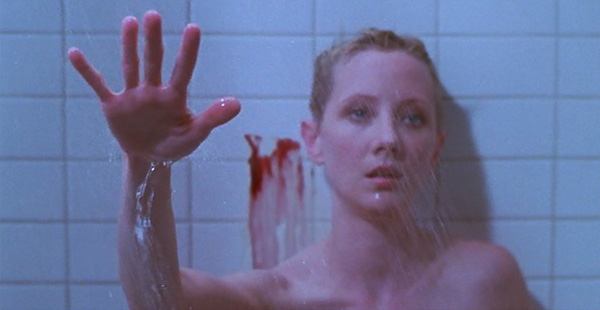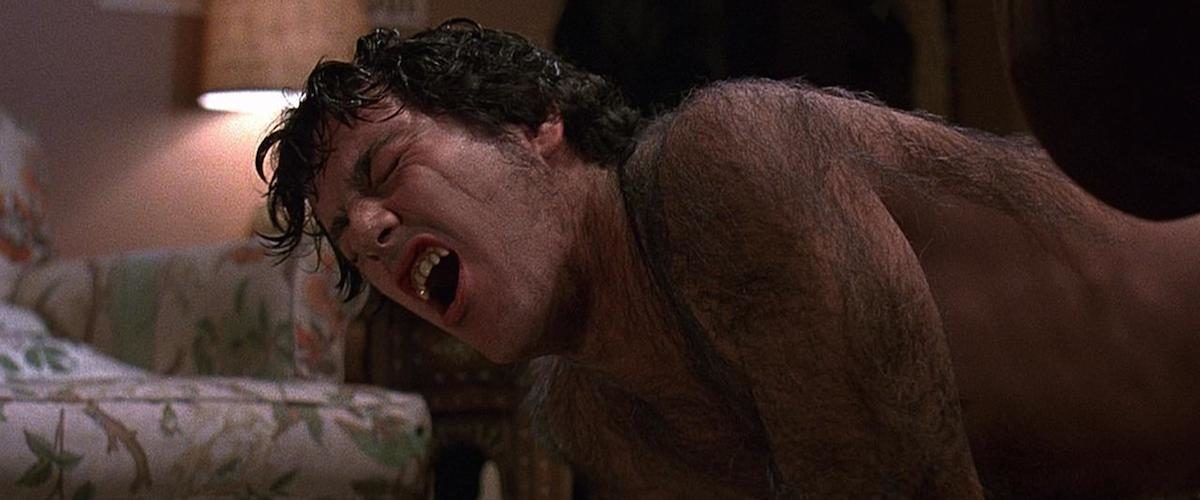Do movies get more intense, horror movies scarier, romantic thrillers more explicit and comedies more full of language as time passes?

Whether you’re talking about the imposition (or later undoing) of the Hayes code, the video nasty scare of the early home video age or all the other censorship movements that are bemusingly quaint now, there’s little doubt each generation enjoys/endures more extreme visual imagery and concepts in films than the one that came before it.
There are obvious examples, of course. There was a time when you’d never see a naked female breast in a movie, or a character being hit by a bullet. During the teen comedy and action movie genres of the 80s, boobs became staple fixtures like streaked hair or bad rock music, squibs of blood as bodies were riddled by bullets as ubiquitous as bad quips and one man armies. Kids of the era probably laughed out loud when their parents remembered how scandalous it once was for a movie to depict a couple in the same bed, even if they were married.
I realise I’m not exactly breaking new sociological ground here. The default state of the teenager is to roll her eyes about how out of touch her parents are on the topic of what’s socially and morally acceptable. But it’s interesting how the social mores that prevailed during our formative years (because of the standards in mainstream mass culture) remain fixed throughout our lives.
Here’s the native film language I learned in my childhood and teens. I consider special effects a fairly essential component of certain genres, I’m not affronted or scandalised by the sight of a naked woman or a sex scene, and I’ve seen so many bodies blown away by high calibre rounds it’s a wonder I and the rest of Generation X aren’t all drooling axe murderers (although isn’t that what Mary Whitehouse tried to convince us of?).
One of the things that really brings this whole idea into focus is when you experience your own disconnect between your standards (of intense, scary, violent, smutty, etc) and that of another generation. I’m now old enough to have mine, which I thought I’d share with you.
I’m sure I’ve talked in the Filmism.net Dispatch about what an impact An American Werewolf in London had on me. Due to a gap in the available ratings from the Australian Office of Film and Literature Classification, I saw it much too young. I spent half the movie buried in my mother’s jumper, barely slept because of it for weeks afterwards and am still as fascinated by it now as ever, almost 40 years later.
What’s that got to do with Psycho? One day my older brother and I were very excited to learn Albert Hitchcock’s immortal classic was going to play on TV. This was in the days even before VCRs, so the only chance you’d ever have of seeing a movie that came out 11 years before you were born was on TV, complete with commercials.
My mum (cue teenage eye roll) was so lame. She debated with us for the rest of the week about whether she was even going to let us watch it because it had so terrified her as a 15-year-old. She tried to strike fear into our young hearts with countless tales of the horrors she’d witnessed (‘you see the knife going into her!’, ‘you see the red blood swirling down the drain!’).
The motifs from Psycho are so pervasive in our culture you needn’t have even seen the film. You can probably do a passable impression of Bernard Hermann’s screeching violins, you know the true identity of the killer, you know there’s a single shot of the knife near the stomach of Janet Leigh’s body double (for less than a second) that doesn’t show any contact, and the blood that swirls down the drain was actually chocolate sauce, filmed in black and white like the rest of the film.
My mum relented, and after we watched and enjoyed it, we spent a good number of years laughing (her included) about how tame it was. The ensuing decades had her convinced you see the entry of the knife and the blood dribbling down the plughole with far more garish clarity and violence than the movie actually depicts. Hitch would have been delighted. He knew better than anyone that the audience’s imagination is the most effective tool in a horror movie.
Fast forward to my own daughter’s middle teen years. I wasn’t nearly as uncool as my mother had been, I actually suggested the family sit down to watch the horror classic that had psychologically scarred me years before. But before closing the DVD drawer and pressing play on American Werewolf, I gave her a warning. She was older than I’d been so I was sure she wouldn’t be as traumatised as I was but the dream sequences, the Nazi monster attack, the tube station tunnels and Jack returning from the grave would still haunt her.
Ninety-some minutes later, she shrugged and said it had been okay. It was just another horror movie with comic overtones, the kind of thing she’d already been watching with friends at sleepovers for years by that point.
My confusion weighed heavily on me. Wouldn’t she sit up in bed for hours waiting for that angry, guttural howl to ring out across the darkened backyard as I had? Wouldn’t Sam Cooke’s version of Blue Moon prompt a Pavlovian response, immediately conjuring up images of Rick Baker’s iconic make-up? Wouldn’t the very idea of trains on London’s underground give her hives?

She thought An American Werewolf in London was lame. I’d thought Psycho was lame. Neither are, and you don’t need to be a cinephile or appreciate the artistry in either film to see that. Hitchcock used very clever directing to generate and maintain nail-swaying tension and didn’t need a rubber knife, a fake torso or lots of blood. John Landis had incredible make-up effects, oodles of heart and soul and genuine terror.
What’s lame is us, years later. To those of us born in the shadow of the Second World War like my mother, the scenes of high emotion or extreme horror (or comedy, or sexual predilections) we saw on screen are still our default setting for ‘acceptable’.
Mine are DeLoreans that travel through time, civil wars in galaxies far, far away, young men trying to convince young women to take their tops off through any means at their disposal and Stallone or Schwarzenegger tearing torsos in half with hails of bullets the way the rest of us would a cheese sandwich.
My daughter will have her own unconscious standards by which she judges everything that comes afterwards across all culture, not just movies. One day she might find herself telling children about the horrifying franchise where a bunch of kids escape a terrible accident and death itself starts hunting them down in the order they were supposed to die, how you see the bodies blown apart, sliced in half, crushed under heavy machinery (etc) and it’s just so real.
And they’ll laugh from under their VR rigs where haptic body coverings simulate showers of blood, blows from a monster’s claw or the rumble from a psycho’s chainsaw, saying ‘yeah, whatever, so basic’ (I think that’s the word they use right now).
We need to keep that in mind when we tut tut about how society is sliding into depravity just because modes of entertainment and media are getting too intense for us personally.
Douglas Adams put it best while talking about technology, but he could just as well have been talking about art when he said; ‘I’ve come up with a set of rules that describe our reactions to technologies. 1. Anything that is in the world when you’re born is normal and ordinary and is just a natural part of the way the world works. 2. Anything that’s invented between when you’re 15 and 35 is new and exciting and revolutionary and you can probably get a career in it. 3. Anything invented after you’re 35 is against the natural order of things.’






